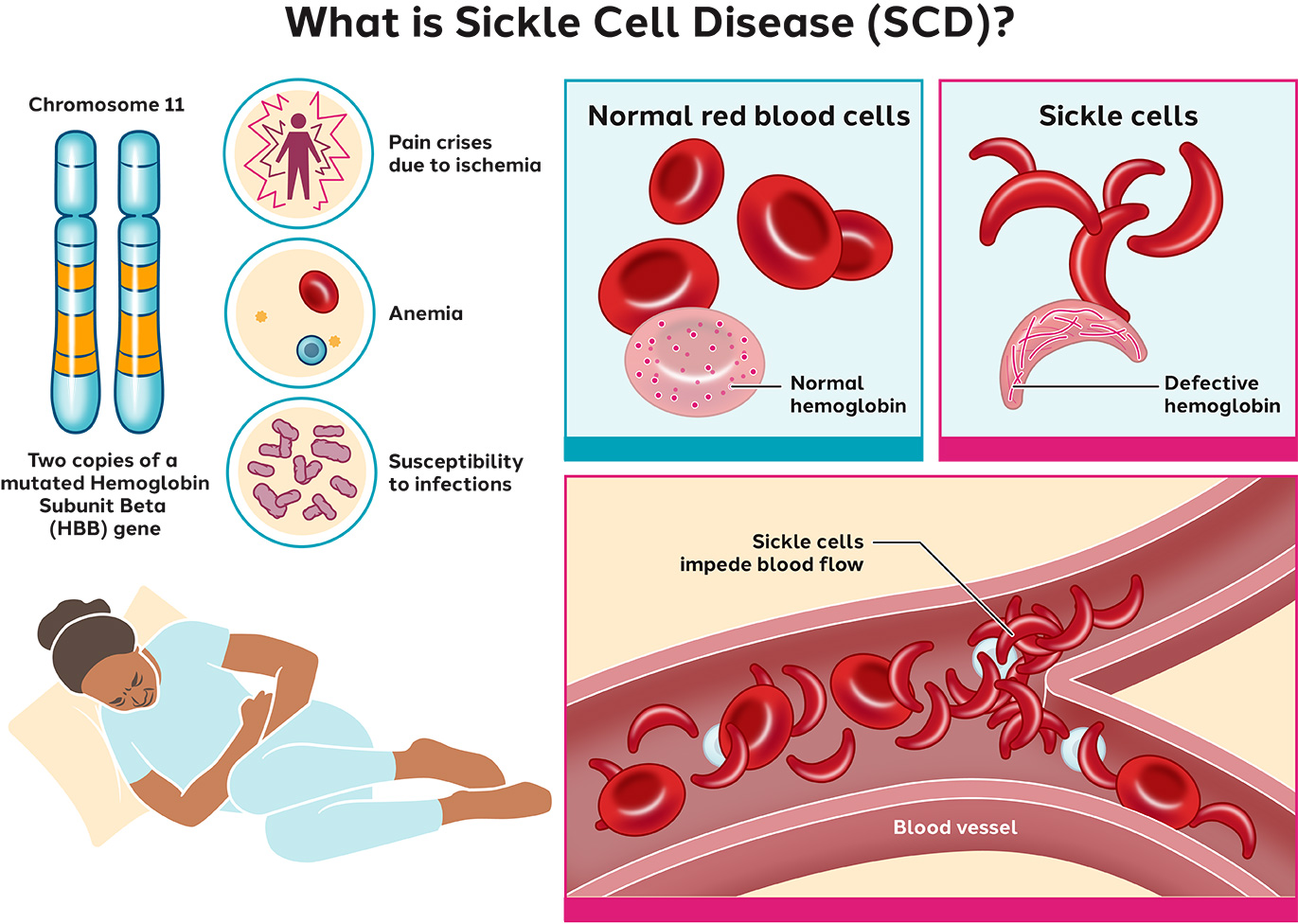Context:
Recently, World Sickle Cell Awareness Day was observed on 19 June 2025. This year's theme was - 'Global Action, Local Impact: Empowering Communities for Effective Self-Advocacy'. Sickle cell disease is a chronic, hereditary blood disorder. This disease is commonly found in tribal people, affecting millions of people worldwide. This day recognized by the United Nations strengthens global efforts to create early diagnosis, effective treatment and supportive community environment for people affected by this disease.
What is sickle cell disease?
Sickle cell disease (SCD) is a genetic blood disorder in which the body produces abnormal hemoglobin. This hemoglobin makes red blood cells deformed (sickle/moon shaped), making them hard and sticky. These cells obstruct blood flow, which impedes oxygen supply and can lead to pain, swelling, infection and organ damage.

Situation in India:
• An estimated 1 million people in India are affected by the disease.
• Major affected states: Odisha, Jharkhand, Chhattisgarh, Madhya Pradesh and Maharashtra, especially in tribal areas.
• According to a 2024 meta-analysis report (Priyanka Rao et al.):
o Prevalence of sickle cell disease (SCD): 1.17%
o Prevalence of sickle cell carrier (trait): 5.9%
Symptoms:
• Anemia, leading to fatigue and weakness
• Recurrent pain crises
• Swelling of hands and feet, jaundice, increased susceptibility to infections, delayed development
• Stroke, acute chest syndrome, splenic failure and priapism in severe cases
Treatments and innovations:
• Drugs like hydroxyurea
• Blood transfusions
• Bone marrow transplant, which may be the only permanent cure
• Painkillers and antibiotics
• Advances in gene therapy:
o Casgevy and Lyfgenia approved by the FDA in the US in December 2023 o In May 2024, a 12-year-old boy was given the first Casgevy-based gene therapy.
Government of India initiatives:
• National Mission for Elimination of Sickle Cell Anemia (2023)
o Objective: Eliminate the disease from the category of public health crisis by 2047
o Target: Screening, counseling, affordable treatment, and public awareness in 17 high-affected states
o Main challenge: Access to medicines and treatment, especially in rural and tribal areas.
Key Takeaways:
• Sickle cell disease is a serious but preventable genetic disease.
• In India, the disease is more prevalent in socio-economically backward communities, especially tribal groups.
• This challenge can be addressed only through a three-pronged strategy of policy, science and community-based interventions.
Conclusion-
Sickle cell disease is not just a genetic problem but a widespread social, economic and public health challenge. To overcome this, public awareness at the grassroots level, timely diagnosis, scientific research and effective policy implementation are essential.






